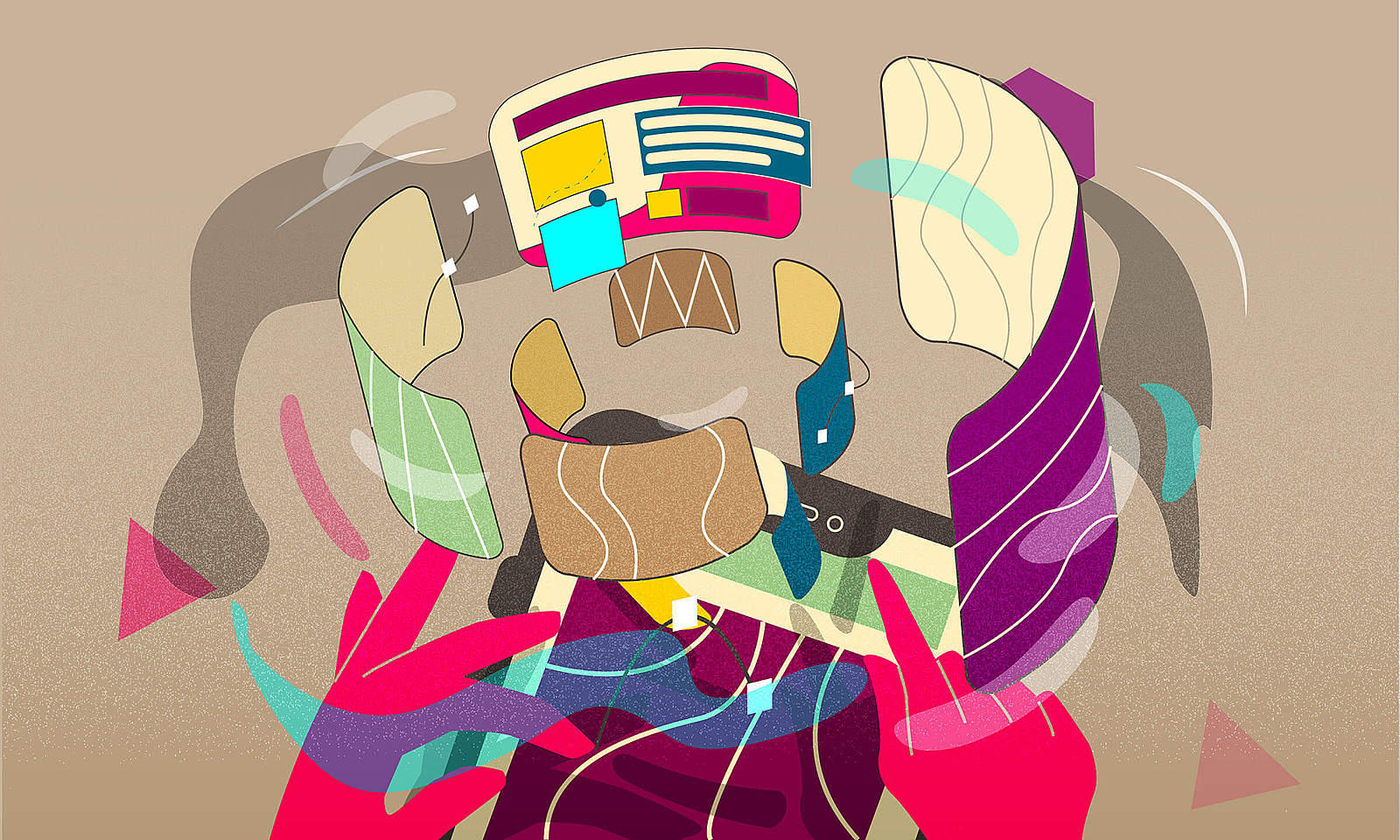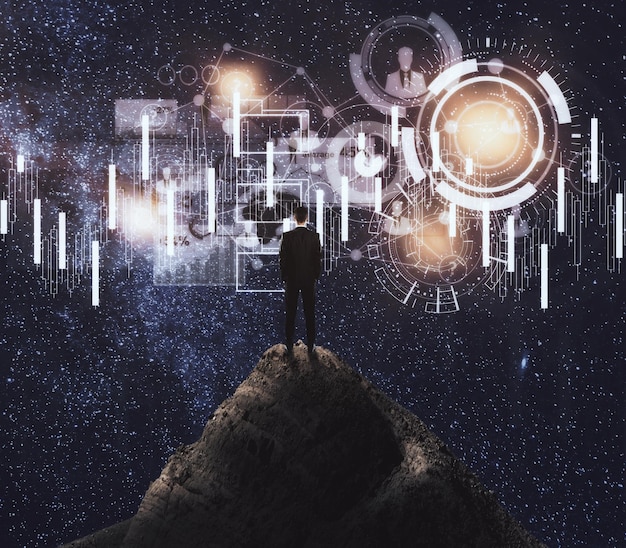In the ever-evolving visual communication landscape, motion graphics are a dynamic and captivating medium that seamlessly blends design, animation, and storytelling. As we delve into motion graphics, we journey to uncover the secrets that breathe life into static visuals, transforming them into animated narratives that captivate audiences across various platforms.
The Essence of Motion Graphics: A Fusion of Design and Animation
Motion graphics, at its core, represent the harmonious marriage of graphic design and animation. Unlike static visuals, motion graphics introduce movement, bringing a sense of life, rhythm, and engagement to the visual experience. It’s an art form that goes beyond traditional design constraints, opening up a realm where images come alive, text dances, and illustrations tell stories through fluid, animated sequences.
Critical Elements of Motion Graphics
- Typography in Motion: Motion graphics often leverage kinetic typography, where text is animated to convey a message dynamically. This adds a layer of visual interest and emphasizes key points, creating a more impactful communication experience.
- Visual Transitions: Seamless transitions between elements contribute to the fluidity of motion graphics. Smooth animations and transitions guide the viewer’s focus, creating a cohesive and visually pleasing narrative.
- Iconography and Illustrations: Icons and illustrations take on a new dimension in motion graphics. They can move, morph, and transform, providing a dynamic visual language that enhances storytelling and reinforces key concepts.
- Colour and Composition: Thoughtful use of colour and composition remains crucial in motion graphics. Colours can evoke emotions, and strategic arrangement ensures that the viewer’s attention is guided effectively throughout the animation.
The Power of Motion Graphics in Visual Storytelling
Dynamic Storytelling Techniques
- Narrative Pacing: Motion graphics allow designers to control the pace of a story. Whether it’s a fast-paced promotional video or a slow and deliberate informational piece, the timing of animations influences how the narrative unfolds.
- Emotional Impact: Through movement, motion graphics can convey emotions in a way that static visuals cannot. The pacing, rhythm, and transitions contribute to the emotional tone of the narrative, creating a more immersive viewer experience.
- Information Hierarchy: Motion graphics enable designers to establish a clear information hierarchy. By controlling the timing and sequence of animated elements, designers can guide the viewer’s attention to essential information, ensuring effective communication.
- Character Animation: Introducing characters into motion graphics adds a layer of personality and relatability. Character animations can tell stories, explain processes, or engage the audience more personally.
Tools of the Trade: Software and Techniques in Motion Graphics
Leading Motion Graphics Software
- Adobe After Effects: Widely regarded as an industry standard, After Effects is a powerful tool for creating motion graphics. Its robust features, including keyframing, effects, and 3D camera tracking, make it a favourite among motion designers.
- Cinema 4D: For those delving into 3D motion graphics, Cinema 4D offers a comprehensive suite of tools. It seamlessly integrates with After Effects, allowing designers to combine 3D elements with 2D animations.
- Blender: An open-source alternative, Blender has gained popularity for its versatility in 3D modelling and animation. It provides a cost-effective option for those entering the world of motion graphics.
Essential Techniques in Motion Graphics
- Keyframing: Keyframing is the foundation of motion graphics. Designers set keyframes to define an animation’s starting and ending points, and the software generates the in-between frames, creating smooth motion.
- Masking and Clipping Paths: Masking allows designers to reveal or hide specific parts of an image or text, enabling intricate animations. Clipping paths define the visible area of an object, adding precision to motion graphics.
- Particle Systems: Particle systems simulate the behaviour of particles in spirits, creating effects like smoke, fire, or confetti. This technique adds realism and complexity to motion graphics projects.
- Expressions and Scripts: Advanced users often employ expressions and scripts to automate repetitive tasks or create complex animations. This enhances efficiency and opens the door to more intricate motion graphic designs.
Industry Insights: The Impact of Motion Graphics Across Platforms
Motion Graphics in Advertising

- Brand Recognition: Animated logos and brand elements enhance brand recognition. Motion graphics in advertising allow brands to convey their identity memorably and dynamically.
- Product Demonstrations: Motion graphics are particularly effective in showcasing product features and benefits. Animated demonstrations bring products to life, making them more engaging and easier to understand.
- Social Media Marketing: The fast-scrolling nature of social media demands eye-catching content. Motion graphics are crucial in stopping the scroll, succinctly conveying messages, and encouraging audience interaction.
Motion Graphics in Film and Television
- Title Sequences: Iconic title sequences in films and TV shows often rely on motion graphics. These sequences set the tone for the story, build anticipation, and contribute to the overall cinematic experience.
- Visual Effects: Motion graphics contribute to visual effects in film and television, from enhancing action sequences to creating fantastical worlds. The seamless integration of graphics with live-action footage is a testament to the power of motion design.
- Information Graphics: In documentaries and news programs, motion graphics visualize data, statistics, and complex information. This aids in storytelling and ensures that information is conveyed in a visually compelling manner.
Motion Graphics on the Web
- Website Animations: Motion graphics on websites enhance user experience. Motion graphics, from animated navigation menus to interactive elements, contribute to a more engaging and dynamic web presence.
- Explainer Videos: Businesses use motion graphics in explainer videos to simplify complex concepts and introduce their products or services in a visually appealing manner. These videos are widely used on landing pages and in marketing campaigns.
- Interactive Design: Combining motion graphics and interactive design creates immersive online experiences. Users can engage with dynamic content, enhancing websites and applications’ overall interactivity and usability.
Challenges and Innovations: Pushing the Boundaries of Motion Design
Challenges in Motion Graphics

- Rendering Time: Complex motion graphics projects, especially those involving 3D elements, can have long rendering times. This poses a challenge, particularly when tight deadlines are involved.
- File Size and Loading Times: Optimizing motion graphics for web use requires balancing visual quality and file size. Ensuring quick loading times is crucial for a positive user experience.
- Keeping Up with Trends: The field of motion graphics evolves rapidly, with new techniques and trends emerging regularly. Staying updated requires continuous learning and adaptation to industry shifts.
Innovations in Motion Design
- Immersive Experiences: Virtual and augmented reality are opening new frontiers for motion graphics. Designers are exploring ways to create immersive experiences that go beyond traditional screens.
- Generative Design: Generative design involves using algorithms and code to create dynamic visuals. This innovative approach allows for the creation of unique, evolving motion graphics.
- AI-Driven Animation: Artificial intelligence is employed to automate certain aspects of animation. AI can analyze patterns and optimize animations, potentially revolutionizing the efficiency of motion graphics creation.
The Future of Motion Graphics: Trends and Predictions
Emerging Trends in Motion Graphics

- Realism in 3D Animation: Advancements in 3D animation are leading to more realistic visuals. The quest for lifelike animation pushes the boundaries of what is achievable in motion graphics.
- Inclusive and Diverse Storytelling: Motion graphics are becoming a tool for promoting inclusivity and diversity. Designers are incorporating diverse characters and perspectives to create more representative narratives.
- Minimalism and Simplified Design: A trend toward minimalism in motion graphics is gaining popularity. Clean, simple designs with subtle animations effectively convey messages without overwhelming the viewer.
Predictions for the Future

- Integration with AI and Machine Learning: Motion graphics may increasingly integrate with AI and machine learning algorithms to create dynamic and responsive animations based on user interactions and preferences.
- Expanded Use in Education: As online learning grows, motion graphics will likely play a more significant role in educational content. Animated lessons, interactive tutorials, and visual explanations could become standard.
- Spatial Computing Integration: With the rise of spatial computing technologies, motion graphics may extend beyond screens to immersive environments. Augmented reality (AR) and virtual reality (VR) applications could redefine how we experience motion design.
Educational Resources and Training in Motion Graphics
Learning Platforms and Courses

- LinkedIn Learning: Offers a variety of motion graphics courses, from beginner to advanced levels, covering software like After Effects and Cinema 4D.
- School of Motion: A comprehensive online platform providing courses in motion design, 3D animation, and more. It emphasizes real-world projects and hands-on learning.
- Motion Design School: Offers lessons in motion design, character animation, and visual effects. Their programs cater to both beginners and experienced motion designers.
Online Communities and Forums

- Mograph.net: A community for motion designers to discuss techniques, share work, and seek advice. It also features job postings and industry news.
- Redditer/Motion Design: A subreddit dedicated to motion design discussions, critiques, and the sharing of resources. It’s a valuable community for both beginners and experienced designers.
- Balance: An online platform where motion designers showcase their portfolios. It’s an excellent resource for inspiration and networking within the design community.
In the intricate dance between design and animation, motion graphics emerge as a powerful form of visual expression. Unveiling the secrets of motion graphics involves
- understanding the synergy of elements,
- mastering essential tools and techniques, and
- we are staying attuned to the ever-evolving trends in the industry.
As motion graphics continue to shape the visual landscape across advertising, film, web design, and beyond, designers embark on a perpetual journey of creativity and innovation. From the challenges of rendering times to the promises of AI-driven animations, the future of motion graphics holds exciting possibilities that will redefine how we perceive and interact with dynamic visuals.
Whether you are a seasoned motion designer pushing the boundaries of creativity or a newcomer exploring the enchanting world of kinetic visuals, the key lies in continuous learning, experimentation, and a passion for storytelling through movement. As we unravel the secrets of motion graphics, we discover a realm where design transcends static limitations, breathing life into visuals and inviting audiences to partake in a mesmerizing narrative told through the artful dance of pixels and frames.